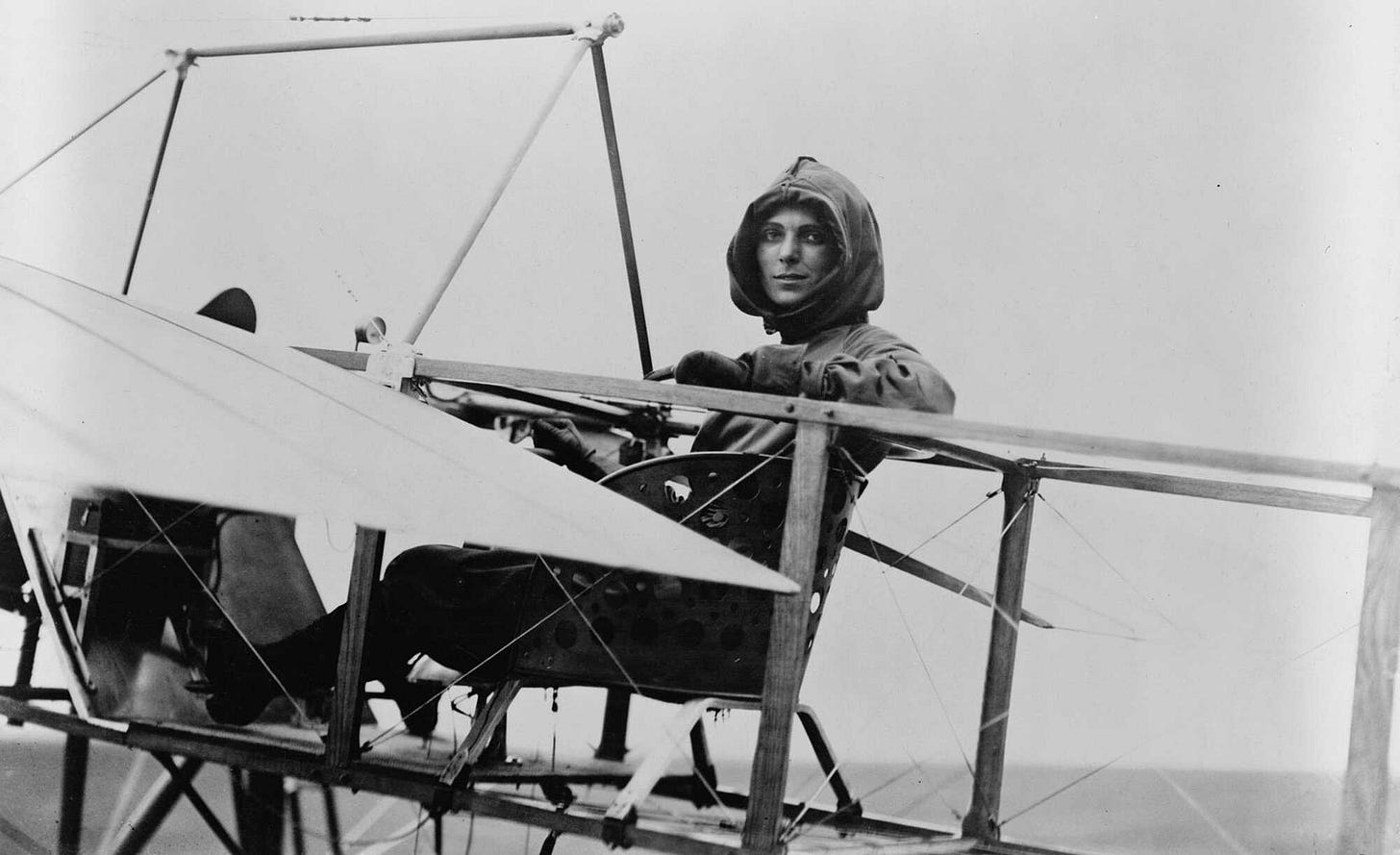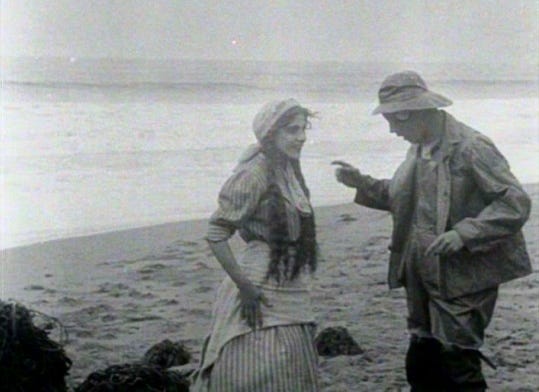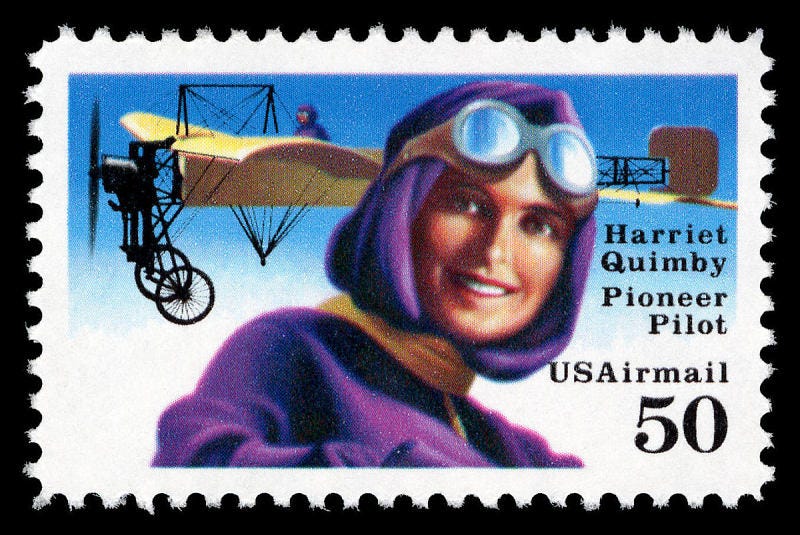Aviator Harriet Quimby (1875-1912) - the first woman to fly the English Channel and the first woman to receive an aviator’s licence in the USA - fell to her death July 1st 1912.
Flying in the Third Annual Boston Aviation Meet, she took off in a two-seater Blériot and climbed to 1,000 feet. She was ejected from her seat when the plane was rocked by a sudden, strong gust of wind. She died on immediate impact with the sea in Boston Harbour.
I wanted to share a little bit about Harriet Quimby for two reasons. One important film-related reason, and the other, because what she did was absolutely pioneering. I did not know the name Harriet Quimby until I was reading Biograph actress Linda Arvidson’s memoir (When the Movies Were Young, 1925). Arvidson’s book about the early years of D.W. Griffith’s career at Biograph (she was an actress and his first wife), I mentioned in last week’s post (give it a read here).
Arvidson was a friend of Quimby’s, who was born dirt-poor in Michigan state, but presented herself as a Gatsby-esque member of the wealthy elite. Arvidson related in her book, how as young actresses in San Francisco they put on a self-financed recital at Carnegie Hall, in order to drum up interest in their talent. They begged and borrowed props and costumes. They received good notices from local rags, Arvidson said, but zero offers of work.
Eventually, Quimby moved to New York and there she became an in-demand writer for magazines such as Leslie’s Illustrated Weekly, serving as the mag’s drama critic. Arvidson was also ensconced in the Big Apple around the same time, with her husband, who began acting, and then directing, for Biograph. The two crossed paths again.
What’s interesting about Quimby, as well as being an aviator, she dipped to her toes into the bourgeoning movie business, when she wrote and sold five scenarios to Biograph, all directed by Griffith, in 1911. But earlier than that, she appeared in a small roll in one of his films (Lines of White on a Sullen Sea, 1909). You can watch it on the Library of Congress YouTube channel here. So there is a tie to the picture business.
But it’s her achievement in being the first woman to fly a plane across the English Channel, taking off from the aerodrome at Whitfield just outside Dover and landing later on French soil, which really caught my attention. I live in Deal, which is just down the road from the port town of Dover.
And this is where history gets sexist … because of course.
Louis Blériot has a memorial statue in his honour in Dover, as the first man to fly the Channel, but Quimby got no such recognition. All she got to mark the hundredth anniversary of her flight, in 2012, was a little plaque on a Holiday Inn which now occupies the site of the old airfield. I mean … she deserves better.
I did some digging with local historian societies and social media groups in Dover and discovered there was a project launched - The Harriet Quimby Centenary Project - to commemorate her with a memorial. But it came to nought. So currently, all that exists is a plaque on a Holiday Inn that, when I asked where it was, nobody even seemed to know exactly.
And the reason given for the lack of acclaim and her name disappearing into the fog of history? The sinking of the SS Titanic on April 15th 1912. The same day Quimby achieved her feat. By 16th April, the world’s press reported on the shock of the sinking. It’s not as if there was no coverage, however. So I’m not entirely convinced it was the reason. The Library of Congress has a copy of North Dakota’s Bismarck Daily Tribune, which does mention Quimby’s achievement in a little capsule (see below, centre) and there are other examples to be found online mentioning the feat. It’s not as if nobody noticed. It’s that typical thing that happens … nobody was looking in the present day, so they assume nobody cared back then.
Quimby became interested in aviation in May 1911, when she covered the Belmont Park Aviation Meet for Leslie’s Weekly. She even got the rag to cough up the dough to pay for flight school. Can you imagine how dangerous flying was in those days? Dangerous but alluring. Thrilling but terrifying. She clearly had nerves of steel and it’s said she cut a dashing figure in her purple aviator outfit (see below on the US commemorative postage stamp):
Scientific American published a report on her Channel escapade also in June 1912. The very next month, sadly she was dead. This article from Scientific American is great because we can see photos and a read a short account.
There was also film shot over trip but I haven’t been able to turn up anything.
Harriet Quimby deserves a proper - and permanent - memorial to her history-making feat in 1912.









